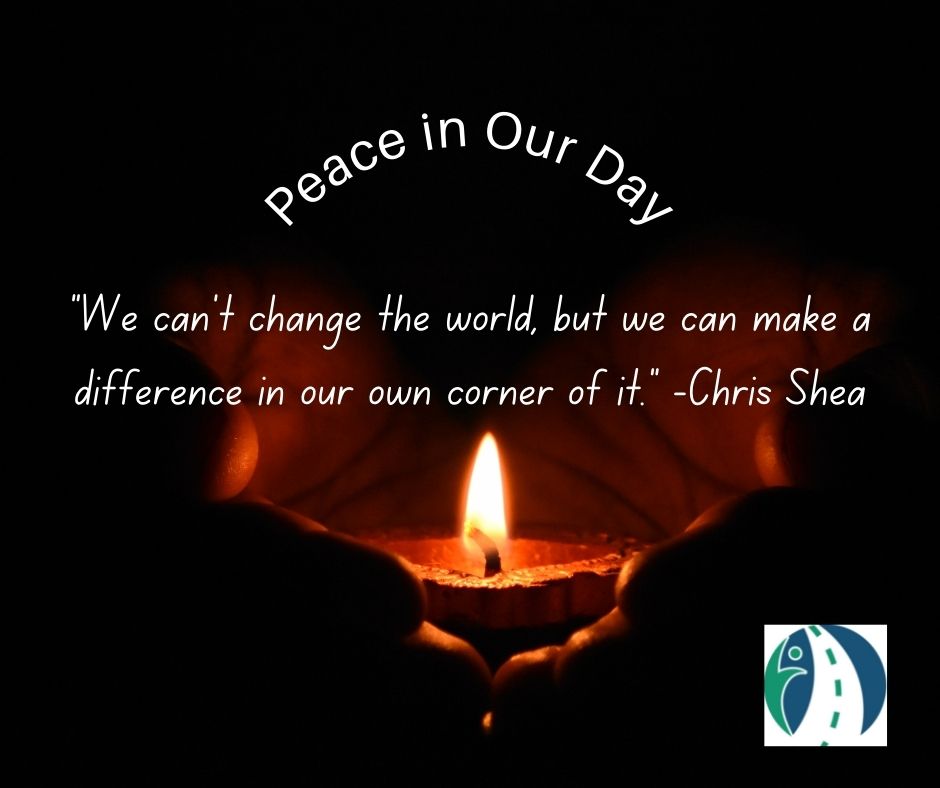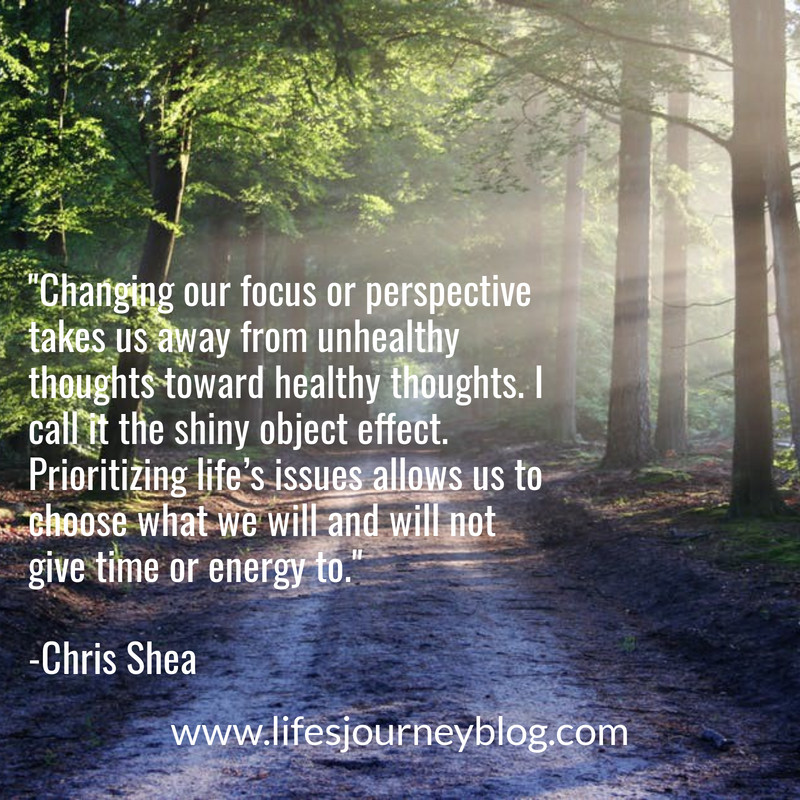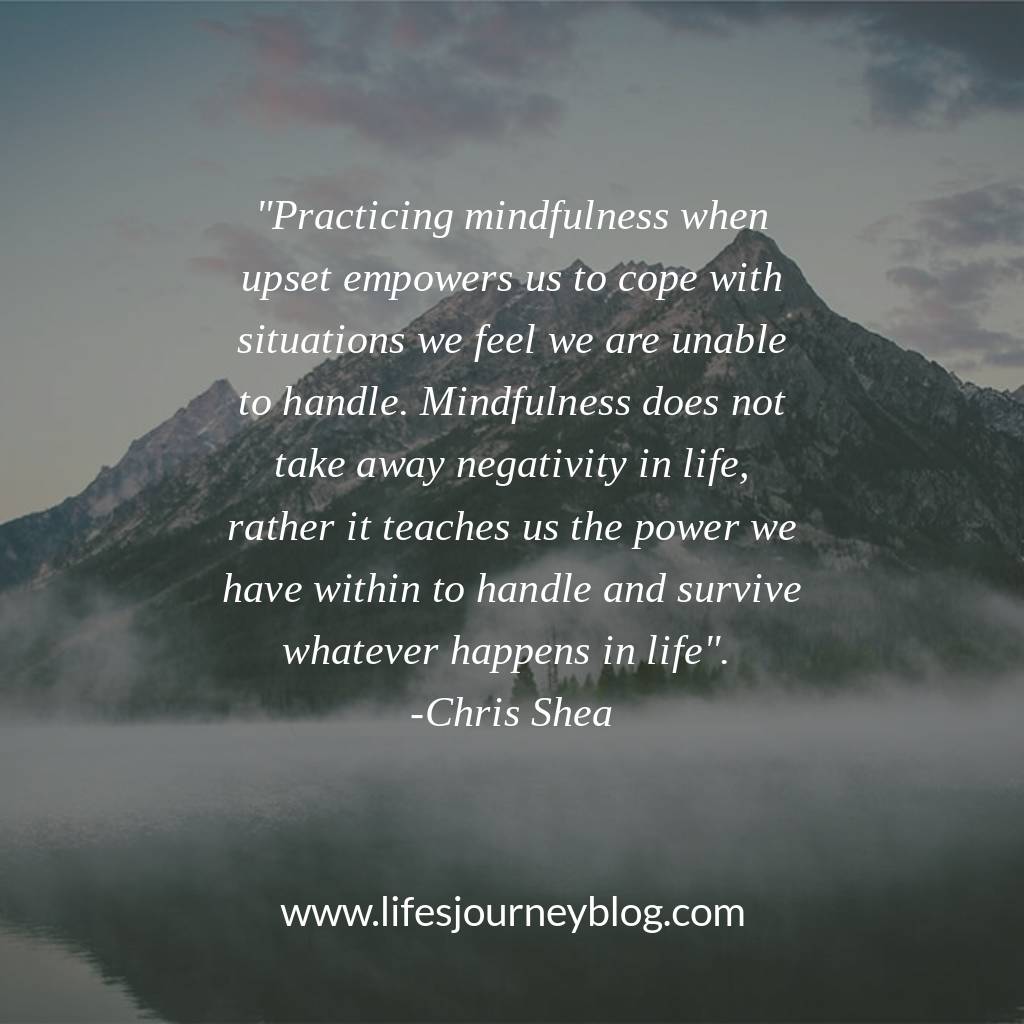Posts Tagged ‘practicing mindfulness when upset’
How To Create A News Consumption Strategy For Mental Peace
Inner peace and contentment are possible, no matter what happens in the world around us. Of course, we can’t control everything that goes on, but we can control our own reactions and how we let the news affect us.
Now more than ever, you need to stay informed about what is happening in the world. The news never stops, so you might be exposed to it constantly, whether you are watching a 24-hour news channel, receiving notifications on your phone, or scrolling through Twitter.
When you click on a shocking headline, there is always something new and scary to increase your anxiety, ramp up your stress, and inflame your anger. The toll the constant barrage of news updates has on your mental health is significant.
It is essential to stay informed, but don’t let the news consume us. Instead, find ways to stay positive and focus on the good things in our lives. For example, strengthen our relationships with the people we care about, do things we enjoy, and be kind to others.
We can’t change the world, but we can make a difference in our own corner of it. When reading a news article, take time to recall the information you just read. Write a note about what you just learned and how it is relevant to your daily life.
Yes, it is possible to have inner peace and contentment
To have inner peace and contentment, developing a personal news consumption strategy is vital. Here are a few tips to help get started:
1. Determine what is important to you and focus on the news that matters most.
2. Limit the amount of news you consume each day.
3. Be selective about the sources you rely on.
4. Take some time to reflect on the news you’ve consumed.
5. Be mindful of how the news affects your mood and emotions.
6. Make time for yourself each day, even if it’s just for a few minutes.
Developing a personal news consumption strategy can be challenging, but it’s worth it in the end.
Tips for developing a personal news consumption strategy
1. Decide what news sources you want to rely on and stick to them. This will help you develop a sense of trust in the information you’re getting and make it easier to verify the accuracy of stories.
2. Set aside time each day to read/watch the news. This will help you stay informed without feeling pulled in every direction and allow you to focus on individual stories.
3. Balance your news consumption with other activities. This will help you stay informed without feeling overwhelmed or stressed.
4. Take breaks from the news. This will help you avoid getting stuck in a news cycle and allow you to come back to stories with a fresh viewpoint.
Figuring out your primary sources for news is the first step in creating a personal news consumption strategy. Once you know where to find the news you’re interested in, you can start to think about how much time you want to spend on it each day. It’s essential to be realistic about how much time you have and set boundaries.
You don’t have to consume the news in the same way everyone else does. Instead, you can develop your own strategy that works for you and helps you stay informed without feeling overwhelmed or stressed.
The goal of developing a personal news consumption strategy is to identify the most important topics to you and find the most reliable sources of information for those topics. Remember that not all sources of information are created equal. Some sources are biased, while others are simply inaccurate. Therefore, it is vital to find sources that you can trust to make informed decisions about the issues that are important to you.
Constant news exposure can have adverse effects on our mental health – it’s crucial to find a balance between staying informed and healthy. Make sure to take breaks from the news, and don’t forget to take care of yourself!
{loadmoduleid 140}
An Expert Life Coach Shares Successful Ways to Change Perspective
Many of us are negatively bothered by the small annoyances in life. Expert life coach Chris Shea shares his successful way to change perspective and live happier.
It’s usually not the big things that affect us as much as the accumulation of these daily small annoyances. We find ourselves lashing out in anger or snapping at others for what they may feel is a small matter, but you are really lashing out not over that issue specifically, rather you are reacting to an accumulation of small issues.
When my clients complain about issues in their life, regardless of my opinion, I try to refrain from labeling it “the small stuff”. If something is bothering someone I don’t want to say “small stuff” as that negates what they’re feeling. Although, I hope to get them to a point when someday in the future they can recognize the current issue was something small and can be now laughed at.
To get to that point of laughing at ourselves over the small stuff one of the questions that I’ll ask my clients is, “in the scope of everything going on in your life and in the world right now, where does this fit?” The question is an attempt to change perspective and put into focus that which is truly important in life.
When we get mentally stuck focused on what is truly a small matter, we need to divert our attention to refocus on something else. Eventually, you’ll forget what you were previously focused on. This helps to reframe our perspective. It’s like a laser pen for cats, keeping their attention focused on a point, not on anything else. We, as humans, act and react the same way a cat does with the laser pointer.
I’ve spent over 20 years working with people suffering from addictions to later work on their recovery while learning how to cope with cravings for their drug of choice. One of the complaints I frequently hear from my former clients is about their sponsor/mentor in guiding them through a craving. They complain to me that when they would be having a craving they would call their sponsor and say “I’m having a craving” and the sponsor would reply “hey did you watch the game last night?”
Bonus: Download Chris Shea’s booklet on Life Coaching & is it for me? Click here to get it
The former client would be dismayed that their sponsor only wanted to talk about the game instead of the craving. They would wonder what’s wrong with their sponsor that they wouldn’t talk about the craving? They’ll suggest to me that they need a new sponsor who cares for them and not some game.
My question to this person in recovery, after listening to their story, is always “well did you use last night?” “No”, they would reply. To which I state “isn’t that the goal you were going for, not using?”
If I have a headache and I focus on my headache then my headache gets worse. If I do what I need to do to take care of that headache and then do something else, my headache seems to get better or even goes away. Changing our focus or perspective takes us away from unhealthy thoughts toward either healthy or neutral thoughts. I call it the shiny object effect. If your cat or dog (or even young child) is fixated on something you don’t want them to be fixated on, simply flash a shiny object and their fixation changes to the new object. You can do this literally or figuratively with yourself and other humans.
Changing perspective helps us understand that some of life’s issues are small and not worth our time, energy, or negativity. Distracting myself from the small issue is but one aspect of coping with the small stuff; understanding and coping with the idea that it’s a small issue is vital.
Prioritizing life’s issues allows us to choose what we will and will not give time or energy to. If the issue, in the scope of what’s happening in the world, won’t make a difference, then let it go. If the issue rises to the level of needing to be addressed, then do so in a healthy, conscious, and productive manner.
{loadmoduleid 140}
6 Tips For Practicing Mindfulness When Upset
In an instant life can become hectic and chaotic. Just when we think we have life all figured out, and our path forward appears to be straight; adversity happens! All the talk of mindfulness, living in the moment, and meditation seem to fall short in light of the adversity and chaotic realities of life.
Platitudes are not my message. My life has had its share of ups and downs so I will not trivialize the impact adversity plays on a person’s thoughts and feelings. My message relies on my own experience of mindfulness and it’s ability to lead us to finding and living with inner peace, regardless of what life may throw at us.
Mindfulness is a word I often use in my writings and in my life coaching sessions with my clients. One of the pioneers in the mindfulness movement, Jon Kabat-Zinn, defines mindfulness as: “a means of paying attention in a particular way; on purpose, in the present moment, and nonjudgmentally.”
The two phrases in this definition which I focus on are “on purpose” and “nonjudgmentally”. To find and maintain inner peace we need to consciously make the choice to spend time every day focusing our attention on what is happening around and within us. Our focus is not meant to judge what is happening, but to notice it. As we become aware of our surroundings and our inner self, we become aware of life’s joys and potential, along with life’s sorrows and adversities. In this state of focused awareness, we are enabled to see solutions; to see hope.
Although it’s important to learn mindfulness before life throws its adversities upon you, mindfulness is not a practice which avoids or negates the negatives in life. We need mindfulness regardless of how we are feeling about ourselves and our situations. In fact, I would say that we need mindfulness even moreso during times of difficulties in our life.
Western society tends to devalue pain and suffering leaving us with the false sense that we can avoid all pain and suffering in life. Speaking from my own experience, and I’m sure you can relate, I have yet to find a way of living life which avoids all pain and suffering. Therefore, society provides us with a false hope, and increases our stress and anxiety when we fail to achieve a life without pain or suffering. The Buddha, in laying out the Four Noble Truths indicated that the principle cause of suffering is desire. In this case, the desire is to avoid all pain and suffering.
Mindfulness is a practice which teaches us how to live and cope with the joys, pains, and suffering we endure. We do not negate anything in life, rather we non-judgmentally accept what is happening and learn the best ways of coping.
Here are my six tips for practicing mindfulness when upset:
- Acknowledge that the emotion you are feeling exists. We do not want to ignore or deny any of our feelings and emotions. What we feel is what we feel. Spend time in quiet simply acknowledging what you are feeling and sit with that feeling. We do not judge the feeling as either good or bad, we simply acknowledge and name what we are feeling.
- The next step is similar to the first step of acknowledgement. In the second step we accept what we are feeling. We do not beat ourselves up that we are feeling this way, nor do we attempt to change how we are feeling. We accept that what we are feeling is our reality. A phrase which needs to be removed from our mind and speech is “ I shouldn’t feel this way.” This phrase creates anxiety since we are scolding ourselves for the reality in which we find ourselves. Who are we to say what we should or shouldn’t be feeling when the reality is we are feeling it! Right or wrong is not the issue, what is happening in the moment is what’s important. Accept how you feel in the moment and understand that this feeling is a part of you. For example, if you were feeling extremely joyful would you question that you shouldn’t be feeling that way? Of course not! So why do we judge any other feeling besides those which we say are positive?
- Once we acknowledge and accept the feelings as they are, we move to the next step of understanding that emotions are fleeting. Emotions come and go, sometimes quickly sometimes slowly, but feelings do not last forever. Therefore, experience your feelings in all of their intensity recognizing that you will never again feel this exact same way. Feelings, in their exactness, cannot be felt again. Sit long enough with your feelings and you may find that they pass during your sitting. When I worked with people struggling from cravings while trying to live in recovery from their addiction, I would ask them to sit and either look at a stopwatch as the time passed, reminding themselves that they are still in recovery, or I would refocus their attention to anything other than the craving. As a behaviorist I understand that most cravings, and even feelings, when not encouraged only last about 15 or 20 minutes.
- Investigate, within yourself, where these emotions and feelings originate. We don’t ask “why” we are feeling these emotions for the answer only leads down the path of judgement. Understanding where the feelings are coming from begins the process of learning what we are to do with the emotions. It’s not a matter of understanding why, but of understanding “what”. The answer to “what” enables us to learn and grow whereas the why simply gives us information which may or may not be helpful to our taking action. Mindfulness and meditation is not just an intellectual act, it’s a process which enables us to learn about ourselves and how we can act in a way that maintains our inner peace.
- As we examine our emotions avoid the urge to catastrophize the possible outcomes. Our mind is an imaginative storyteller, yet these stories tend to make the situations worse than reality. it’s important for us to keep focused on realistic outcomes for the future rather than imagining outcomes way worse than might be possible. A technique you can use is to ask yourself the question “what is the worst that can happen?” Then ask yourself the question “if the worst does happen what can I do about it?” Consider all the possible actions that you, and with the assistance from others, can do to cope with even the worst case scenario. Understanding that the worst case scenario is probably not going to happen, if you have a plan for the worst case then when reality happens and it’s not as bad as what you imagined you will find peace in knowing that you can cope with the situation.
- The last tip for practicing mindfulness when upset is to learn from the situation. After following steps 1 through 5 you now have the ability to step back from the situation and reflect on what you have learned from what has happened. Learn from the actions that you took which worked and learn from the actions which you took that didn’t work. Learning where our emotions originate and how best to cope with those emotions gives us the power to tackle the same situations in similar ways. Future adversity will no longer be a stressor for us since we have learned that we not only can survive the adversity but what we also can do to minimize future adversity.
Practicing mindfulness when upset empowers us to act and to cope with situations which we may feel we are unable to handle. Mindfulness does not take away negativity in our lives, rather mindfulness teaches us the power that we have within to handle and survive whatever life may throw at us.
{loadmodule mod_custom,continue the conversation here or on social media}



